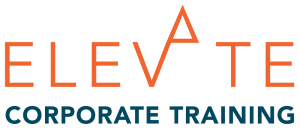The top-performing salespeople may have different ways of conducting business, but they have core competencies that anchor their performance. These sales skills and sales techniques are essential for success. Let’s call them the 3 Ps: People, Process, and Pursuit.
1. People
Unless your business is completely transactional you will need to develop strong people skills to be effective.
Relationship Building
Few sales happen without trust from the buyer. This trust won’t occur until they have developed some level of confidence in the person trying to sell them something. Building a relationship with buyers is crucial to the selling process.
Everyone likes to think they make decisions logically based on an analysis of the facts. Science shows us that people make decisions emotionally rather than logically. The emotional connection buyers feel towards their salesperson plays a significant role in the buying decision.
Positive Attitude
American automaker Henry Ford created the Model T and ushered in the industrial revolution with his. “Whether you think you can, or think you can’t – you’re right,” Ford once said. Attitude, it seems, dictates our actions and the reactions you get from others.
A positive attitude is one of the most frequently undervalued sales skills. When you are genuinely excited about the products you’re selling and what it can do for your customers, this enthusiasm can be contagious.
Communication & Presentation Skills
You can have a great product at a great price, but if you can’t articulate the benefits to your customer, it’s going to difficult to close sales. What makes it’s even more difficult is that different buyers will react better to different communication styles.
Theorist Neil Fleming developed a model of learning styles that are valuable to salespeople today. Most people, he posited, learn in one of four ways:
- Visual
- Auditory
- Reading/Writing
- Kinesthetic
Visual learners prefer the use of images, videos, graphics, and visual presentations to understand new information. Helping buyers visualise your product as the solution can help.
Auditory learners do better when you explain things verbally. They need to hear it directly from you and repetition can help drive home key points.
Read & Write learners react to the power of the written word. They might react better to written proposals with case studies of success.
Kinesthetic learners better understand information through a tactile presentation. They like to be hands-on and try things out. A hands-on demo of your product or service might work best.
Adapting your communication style to the way buyers learn and process information will help make sure you’re delivering the right message the right way.
This means practicing active listening skills. Too often, salespeople are thinking ahead to the next question and not really listening to what people are saying. Sales training can help in this area. Developing active listening skills takes practice.
Objection Handling
No matter how well you present something, most buyers are going to have objections. How you handle these objections is what sets top-performing salespeople apart from the rest.
Don’t think of objections as a bad thing. You’re getting feedback and uncovering obstacles you’ll have to clear to make a sale. As part of your active listening, you should be seeking out these objections so that you can effectively counter them.
Overcoming objections is another place where sales courses, or sales training, can be valuable. How you react to objections can be just as important as how you address the concern.
Here’s another acronym for you: ACAC.
- Acknowledge
- Clarify
- Address the Objection
- Confirm
When confronted with an objection, it’s important to acknowledge their concern in a genuine way. You might repeat back what you heard and show empathy for their viewpoint.
Next, you need to clarify and make sure you understand their concern. Often, the first stated objection isn’t really what’s driving their concern. For example, many customers will express concerns over the price. Typically, it’s not the price they are concerned about, but the confidence they have in you or your company. If they believed your product would deliver the results or the ROI you tell them it will, price isn’t the issue. It’s trust.
Only now can you address the objection directly. Along the way, you should be checking with the customer to make sure they understand and accept your response. With confirmation, you haven’t cleared the objection.
2. Process
The best salespeople excel not only at people skills but in the process of developing sales.

Product Knowledge
More than half of prospects want to see or understand how products work on the first call. You need to have intimate knowledge of the product itself. This means understanding the features and benefits, but it also means understanding how it works.
Knowledge, as they say, is power. Salespeople with strong brand expertise and intense product knowledge sold 87% more than their peer groups, according to a survey by Mindtree. Nearly half of customers (49%) surveyed by TimeTrade report they are extremely likely to buy from a salesperson that can demonstrate significant product knowledge.
Strategic Prospecting
Most sellers hate the prospecting phase as much as cold calling. Both, however, are necessary to keep the sales pipeline full. Top performers have a rigid routine for prospecting and qualifying customers. They have developed sales techniques to conduct business in an efficient and strategic manner.
Strategic prospecting isn’t something to do when you have the time, it’s necessary to block out time on your calendar each week to identify, prospect, and qualify leads.
The first step is to develop leads. Once you’ve got an idea of who to prospect, it’s time to research. Before you can qualify them as a potential customer, they must demonstrate two things:
- They must need for the product or service you are selling
- They have the means to pay for it
Your job in qualifying is to determine these two things. Without them, you’re wasting your time.
As part of your research, you need to identify the economic decision-maker(s) and make a connection.
Time Management
As with most things in life, time is one of our most precious resources. Once it’s gone, it’s gone. It’s so easy for our day to get caught up in answering emails, filling out reports, or dealing with life’s interruptions.
The average salesperson spends just a little more than a third of their time selling. If you want to increase the time selling – and the money you’re making – you need to commit to practicing solid time management skills.
Schedule everything on a calendar and stick to it. Prioritize tasks and focus on the important ones first.
3. Pursuit
The best salespeople are relentless. They make that one extra phone call, drop by in person one more time, and send out yet another email.
Be Relentless
It takes an average of 8 cold call attempts to reach a prospect. Top performers don’t give up when the first 7 calls go unanswered.
80% of sales require a minimum of 5 follow-up calls after the first meeting. Don’t be one of the 44% of salespeople that give up after just one follow-up attempt.
Pursue qualified prospects with vigour until you hear the final no.
Life-Long Learners
Finally, top performers are life-long learners. They invest in sales courses and sales training to learn new ways of doing things and remember the things that work. They practice what they learn, and they track the results they get.
Studies show that high-performing sales organizations are twice as likely to invest in ongoing sales courses and sales training as their peers.





